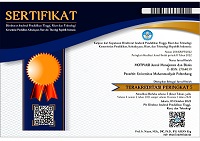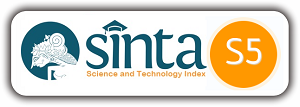Analisis Struktur Modal PT Unilever Indonesia dan PT Mayora Indah
Abstract
ABSTRACT
Purpose - This study aims to determine the financial and operational characteristics of both companies, analyzing the capital structure policy and analyze whether differences in performance caused by the company's capital structure policy, and to analyze the presence or absence of financial leverage on PT Mayora Indah which use high levels of debt.
Design/methodology - he research methodology used in this research is quantitative research with explanatory type. The data type used secondary data in the form of financial statements, inflation rate, BI rate and exchange rate. The data analysis used financial statements and financial ratios.
Findings – PT Unilever Indonesia has a policy of capital structure with 100% equity, while PT Mayora Indah has capital structure in the form of high proportion of debt levels. Theoretically characteristics of a company has a role in influencing the capital structure and the capital structure of a company is one of the factors that affect the company's performance. The analysis results indicate that the company's financial performance is not resulted from the capital structure policy. It is seen from the ratio chart of OPM and NPM having similar direction of high debt movement and the use of high debts at PT Mayora Indah does not generate financial leverageKeywords
Full Text:
PDFReferences
Brigham, E.F. (2011). Financial Management Theory and Practice 13th. Printed in the US of America.
Eriotis, N (2007) “How Firm Characteristics Affect Capital Structure: an Empirical Study”. Vol. 33. 321-331
Hanafi, M. (2004). Manajemen Keuangan. Yogyakarta, Indonesia. BPFE.
Husnan, S. dan Pudjiastuti, E. (2012). Dasar-dasar Manajemen Keuangan. Yogyakarta. UPP STIM YKP
Omran, M dan Pointon, J. (2009) “Capital Structure and Firm Characteristics: an Empirical Analysis from Egypt”. Review of Accounting and Finance,Vol. 8. No.4. 454 – 474
Riyanto, B. (2010). Dasar-Dasar Pembelanjaan Perusahaan. Yogyakarta. BPFE
Sartono, R. A. (2000). Ringkasan Teori Manajemen Keuangan. Yogyakarta. BPFE
Sartono, R. Agus (2010). Manajemen Keuangan Teori dan Aplikasi. Yogyakarta. BPFE
Sheikh, Nadeem Ahmed dan Zongjung Wang. 2011. Determinants of Capital Structure: An Emperical Study of Firmsin Manufacturing industry of Paskitan. Managerial Finance 37. No. 2, Halaman 117-133.
Schoubben, F. dan Hulle, C. V. (2004). “The Determinants of Leverage: Differene between quoted and Non-Quoted Firms”.Tijdschrift voor Economie en Management, XLIX, 4. 589-621
Shyam-Sunder, L. dan Myers, S. C. (1999). “Testing Static Tradeoff Against Pecking Order Model of Capital Structure”. Journal of Financial Economics, 51. 219-244.
Tian & Zaitun (2007) “Capital Structure and Corporate Performance: Evidence from Jordan”. Australasian Accounting, Business and Finance Journal. 1. Page 42
Titman, S. dan Wessels, R. (1988). “The Determinants of Capital Structure”. Journal of Finance, 43. No. 1. 1-19.
Wulandari, Dian (2014). Analisis Pengaruh Karakteristik Perusahaan terhadap Struktur Modal pada Perusahaan Industri Dasar dan Kimia yang tercatat di Bursa Efek Indonesia. Tesis. Diakses 29 Mei 2015, dari database Perpustakaan UGM.
DOI: https://doi.org/10.32502/mti.v3i1.2049
Refbacks
- There are currently no refbacks.
Copyright (c) 2019 MOTIVASI Jurnal Manajemen dan Bisnis
Motivasi: Jurnal Manajemen dan Bisnis is Published by Management Department, Economic and Business Faculty, Muhammadiyah University of Palembang. This work is licensed under a Creative Commons Attribution-ShareAlike 4.0 International License.
Indexed/Abstracted






.png)
.png)



